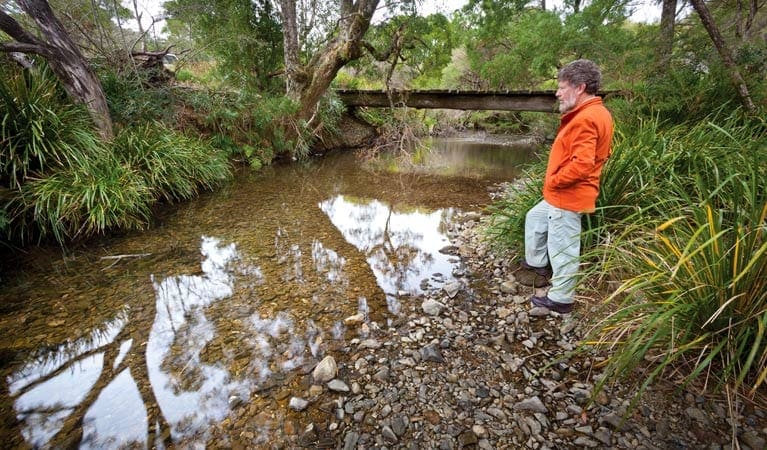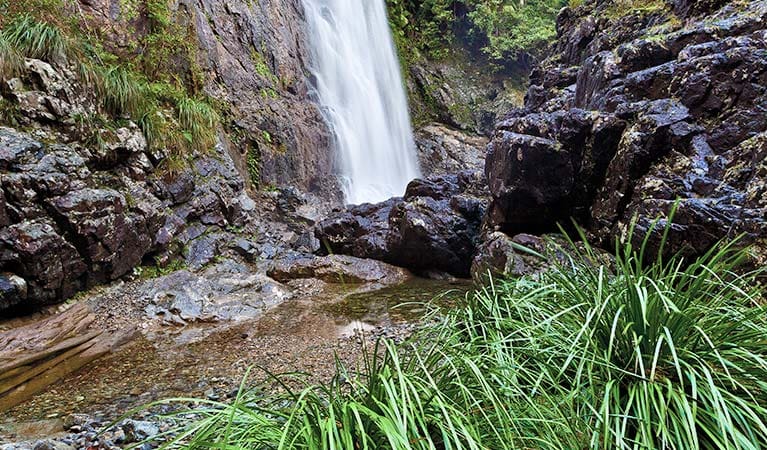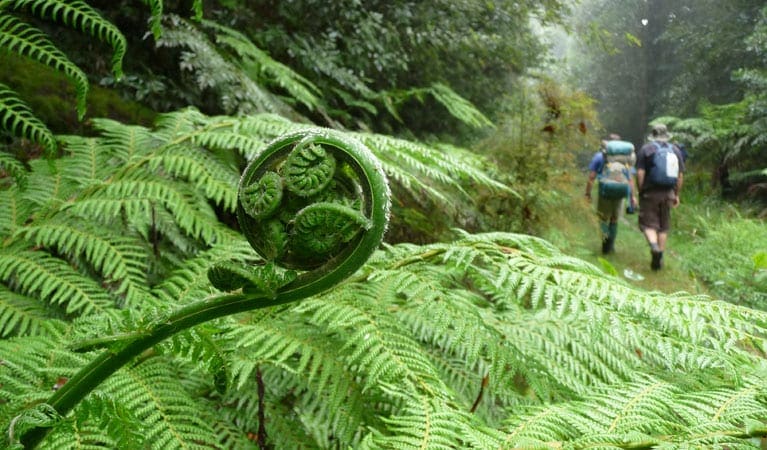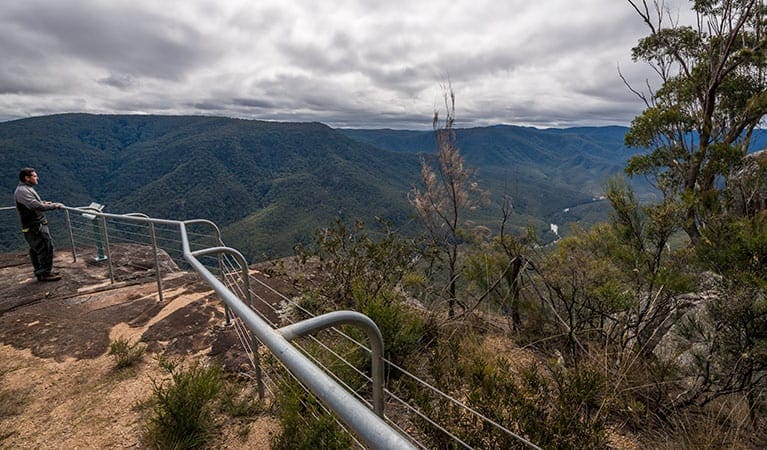Wooli to Red Rock is the most strenuous and remote section of Yuraygir coastal walk. Enjoy the challenge of crossing rocky platforms when the tide's out and crossing rivers using boat transport. The route can be tackled as a challenging day walk or part of a multi-day trek. Hike long stretches of rocky shoreline interspersed with high-energy pebbly beaches, find the way across a tidal creek and walk along sandy beaches fringed with lush pandanus palms. You can even stop wherever you like and try your hand at fishing. You'll see protected habitat for the endangered little tern at both the northern and southern ends of Station Creek Beach, near Pebbly Beach campground and Red Rock town. Keep your binoculars handy for spotting these tiny migratory seabirds with distinctive black, white and grey markings. Breeding has been increasingly successful due to management action and visitation control of this part of the national park.
Part of this walk involves traversing rock platforms. Please check tide charts as some sections may be impassable in rough ocean conditions during a high tide.
The route is best walked north to south so the sun is on your back and not in your eyes
Toilets can be found at Pebbly Beach and Red Rock
You'll need to arrange safe river crossings at Wooli and Red Rock - for help crossing these rivers, please contact Wooli: 0439 409 909 or Red Rock: 6649 2730.
Remember to take your binoculars if you want to go whale watching
Visit NSW National Parks and Wildlife Service for more information on this trail.
The longitude and latitude of the start and end points are approximately only and should not be used for navigation purposes. Please contact me if you know the correct coordinates.
Got some great shots from this hike? Upload your photos here to inspire others and show off the beauty of the trail!
Submitting your photos doesn’t mean you lose ownership. You can be credited for your contributions, and you can request removal at any time.
Please don’t copy GPX files or content from this site to AllTrails or other platforms. Each trail has been personally mapped, documented, and refined to support Australia’s bushwalking and hiking community. While some details come from land managers, every listing reflects significant personal effort. This is a free, community-driven initiative—your respect helps keep it that way.
It looks like I don’t have a GPX file for this trail yet. If you have one to share, please email it to me! I’ll verify it against official maps before adding it to help other hikers have a safer, easier experience. Thanks for contributing to a better hiking resource.
Getting there
Getting to the trailhead: Yuraygir National Park.
To Red Rock. Wooli is in the southern precinct of Yuraygir National Park. To get there:From Pacific Highway, take the Wooli/Minnie Water turnoff 55km from Coffs Harbour.Continue another 37km to Wooli River Park entry points Red Rock See on map Red Rock boat ramp access See on map Wooli access See on map Parking Parking is available at Wooli, including several designated disabled spots. Bus parking is available.
Closest towns to this walk: Brooms Head, Grafton, Gulmarrad, Iluka, Maclean, Wooloweyah, Yamba
Similar walks nearby
Looking for more walks in or near Yuraygir National Park? Try these trails with a similar difficulty grade.
Favourite

Favourite

Favourite

New England National Park
Favourite

Mann River Nature Reserve
Track grade
Grade 5 (Difficult) - Walks for the Most Experienced: Grade 5 represents the most challenging walking tracks on the
AWTGS. These are only recommended for very experienced and fit walkers with specialised skills, including navigation and emergency first aid. Tracks are likely to be very rough, very steep, and unmarked. Walks may be more than 20 kilometers. These challenging walks demand a high level of fitness and experience to navigate difficult terrain, significant elevation changes, and potentially unformed paths.
Explore safe
Plan ahead and hike safely! Carry enough water, pack layers for changing conditions, and bring safety gear like a torch, PLB, and reliable communication device. Check official sources for trail updates, closures, and access requirements, and review local weather and bushfire advice. Most importantly, share your plans with someone before you go. Being prepared makes for a safer and more enjoyable hike! Stay Safe, Explore More, and Always #ExploreSafe.
Packing checklists
What you carry in your pack depends on factors like weather, terrain, and your adventure type. Not sure what to bring? My free planning, food, and packing checklists are a great starting point, covering day hikes, overnight trips, and multi-day adventures. Use them to customise your kit and always prioritise safety.
Let someone know
Before heading out, take a moment to fill out your trip intentions form. It’s a quick way to share your hike details with family or friends. If something goes wrong, they can notify emergency services, ensuring a faster response and peace of mind. Stay safe and enjoy your adventure
Suggest an edit
Spotted a change on this trail? Maybe there are new features, the route has shifted, or the trail is permanently closed. Whatever the update, I’d love your input. Your feedback helps fellow hikers stay informed and ensures that our trail info stays fresh and reliable.






